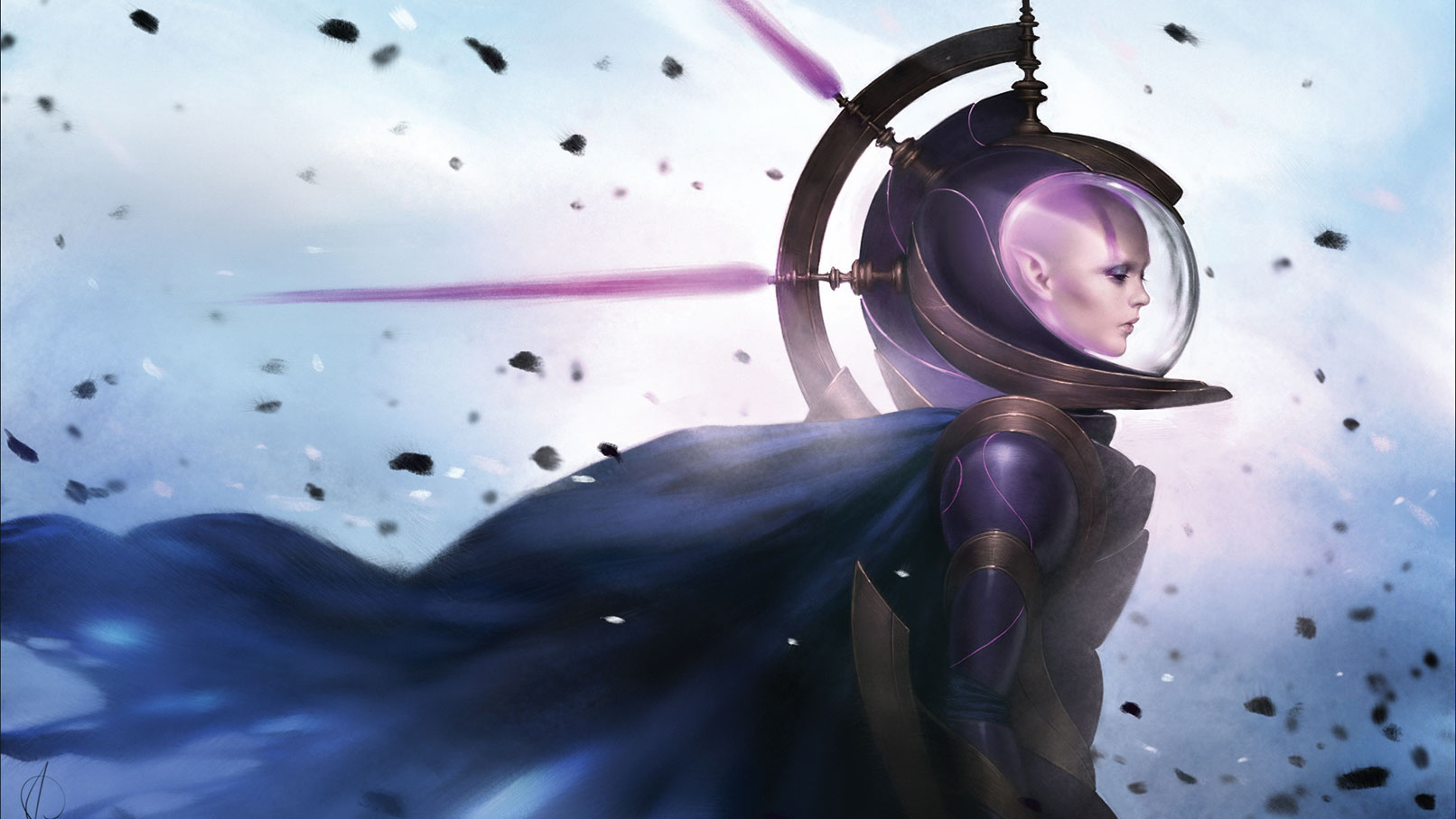How to paint curved glass on a space helmet
Discover how to use subtle hints of light to create realistic glass.

Spacesuits are fun to paint, but the helmet part can be tricky to get right, especially the glass element because you have to take into account its reflective properties, and the fact that it's transparent.
So here are a few tips to paint this element. The first thing to know is that you almost don't need to paint it. This may sound odd, but because it's transparent all you have to do is to suggest the glass element with subtle hints of light.
The second thing to keep in mind is the shape. It's like a ball, so the light and colours should be depicted exactly the same as any other round object.
Essentially, I'll be painting a glass ball here. Glass is a very reflective surface/material, so painting the light is crucial. It's the basis of everything: the texture, the volume and shape of the helmet, so have fun and go crazy with your space-faring character!
Download Mélanie's custom brushes for this tutorial.
01. Create the shape

From my concept sketch, I create a round shape with a custom textured brush. I don't want the glass to have an overly clean look, even if it's usually a smooth polished surface. I use a neutral violet colour for this base. The glass shape and volume is only suggested by curved brush strokes and the rest of the helmet.
02. Refine your lines

I refine the previous lines, and erase some dark parts inside the helmet leaving more room for my character. I try to create a clean, curved shape. I work the face as normal; I choose to keep the glass uncoloured, but you can quickly achieve coloured glass by adding colour on a low opacity layer on top of the figure's face.
Daily design news, reviews, how-tos and more, as picked by the editors.
03. Bring in some light

To add light I paint some almost white curved lines on the borders of the glass part, where the glass is the most reflective. Adding some coloured hints of the surrounding environment will increase the realism of your helmet. With a very small round brush I add small dots of light on the edges to bring in reflection effects.
This article originally appeared in ImagineFX issue 143; buy it here!

Mélanie is a freelance illustrator who specialises in fantasy. She is a digital painting instructor at CGMA.
